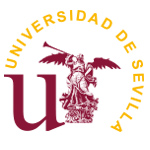Decisions during the transfer of in-service training for Mathematics teachers
DOI:
https://doi.org/10.12795/revistafuentes.2023.21662Keywords:
Inservice teacher education, Instructional programmes, Mathematics, Training, Associations, Know-how transfer, Decision making, Teaching practiceAbstract
The concept of teachers’ training transfer is understood as the extent to which teachers are capable of generalizing the training learning to workplace. In this process, recognizing application scenarios and making decisions on the application play an important role. The objective of the research is to explore the relationships between the training transfer factors and the activities of identifying application scenarios and making decisions about it in the context of the training programs of non-university Mathematics teachers. The participants were 344 active teachers. Two multinomial logistic models were determined to studying the relationships indicated by analyzing the odds ratio of the models. The results showed that the factor Design and development of training was positively associated with both the ability to identify application situations and the decision to carry out an effective application. On the other hand, the factors Follow-up of the training institution and External locus of control were positively associated with the ability to identify application scenarios, while the association between the factor Feedback of students and families and the identification of application scenarios was negative. In conclusion, dimensions have been identified on which to design interventions to improve the training transfer of mathematics teachers.
Downloads
References
Alsalamah, A., & Callinan, C. (2021). Adaptation of kirkpatrick’s four-level model of training criteria to evaluate training programmes for head teachers. Education Sciences, 11(3), 116. https://doi.org/10.3390/educsci11030116
Alsina, A. (2020). El Enfoque de los Itinerarios de Enseñanza de las Matemáticas: ¿por qué?,¿para qué? y ¿cómo aplicarlo en el aula? TANGRAM-Revista de Educação Matemática, 3(2), 127-158. https://doi.org/10.30612/tangram.v3i2.12018
Adamuz-Povedano, N., Fernández-Ahumada, E., García-Pérez, M. T., & Montejo-Gámez, J. (2021). Developing Number Sense: An approach to Initiate Algebraic thinking in primary education. Mathematics, 9(5), 518. https://doi.org/10.3390/math9050518
Baldwin, T. T., Ford, J. K., & Blume, B. D. (2017). The state of transfer of training research: Moving toward more consumer‐centric inquiry. Human Resource Development Quarterly, 28(1), 17-28. https://doi.org/10.1002/hrdq.21278
Barrera, H. F. (2021). Resolución de Problemas, Pensamiento Numérico y Variacional en Básica Primaria: una Revisión. Educación y ciencia, (25), e12594-e12594. https://doi.org/10.19053/0120-7105.eyc.2021.25.e12594
Beltrán-Pellicer, P., & Godino, J. D. (2020). An onto-semiotic approach to the analysis of the affective domain in mathematics education. Cambridge Journal of Education, 50(1), 1-20. https://doi.org/10.1080/0305764X.2019.1623175
Bhat, Z. H., Mir, R. A., Rameez, R., & Rainayee, R. A. (2022). The influence of learner characteristics, instructional design and work environment on the transfer of training. Industrial and Commercial Training, (ahead-of-print). https://doi.org/10.1108/ICT-03-2022-0014
Blume, B. D., Ford, J. K., Surface, E. A., & Olenick, J. (2019). A dynamic model of training transfer. Human Resource Management Review, 29(2), 270-283. https://doi.org/10.1016/j.hrmr.2017.11.004
Brion, C. (2020). The role of culture in the transfer of training. International Journal of Training and Development, 24(4), 384-393. https://doi.org/10.1111/ijtd.12203
Cahapay, M. B. (2021). Kirkpatrick model: Its limitations as used in higher education evaluation. International Journal of Assessment Tools in Education, 8(1), 135-144. https://doi.org/10.21449/ijate.856143
Cubo, S., Marín, B., & Ramos, J. L. (2018). La investigación experimental. Métodos de investigación y análisis de datos en ciencias sociales y de la salud. Editorial Pirámide.
Dachner, A., Ellingson, J., Noe, R., & Saxton, B. (2021). The future of employee development. Human Resource Management Review, 31(2), 100732. https://doi.org/10.1016/j.hrmr.2019.100732
Feixas, M., Fernández, A., Lagos, P., Quesada, C., & Sabaté, S. (2013). Factores condicionantes de la transferencia de la formación docente en la universidad: un estudio sobre la transferencia de las competencias docentes. Infancia y Aprendizaje, 36(3), 401-416. https://doi.org/10.1174/021037013807533034
Flores-Cuevas, F., Vásquez-Martínez, C. R., & González-González, F. A. (2021). El uso de las TIC en la enseñanza de conceptos geométricos en la educación básica. RIDE. Revista Iberoamericana para la Investigación y el Desarrollo Educativo, 12(23). https://doi.org/10.23913/ride.v12i23.1024
Ford, J. K., Baldwin, T. T., & Prasad, J. (2018). Transfer of training: The known and the unknown. Annual Review of Organizational Psychology and Organizational Behavior, 5, 201-225. https://doi.org/10.1146/annurev-orgpsych-032117-104443
Gandomkar, R. (2018). Comparing Kirkpatrick’s original and new model with CIPP evaluation model. Journal of Advances in Medical Education & Professionalism, 6(2), 94-95. https://dx.doi.org/10.30476/jamp.2018.41014
Gegenfurtner, A., Knogler, M., & Schwab, S. (2020). Transfer interest: Measuring interest in training content and interest in training transfer. Human Resource Development International, 23(2), 146–167. https://doi.org/10.1080/13678868.2019.1644002
Hossein-Mohand, H., Trujillo-Torres, J. M., Gómez-García, M., Hossein-Mohand, H., & Campos-Soto, A. (2021). Analysis of the use and integration of the flipped learning model, project-based learning, and gamification methodologies by secondary school mathematics teachers. Sustainability, 13(5), 2606. https://doi.org/10.3390/su13052606
Huang, J., Blume, B., Ford, J., & Baldwin, T. (2015). A Tale of Two Transfers: Disentangling Maximum and Typical Transfer and Their Respective Predictors. J Bus Psychol, 30, 709-732. https://doi.org/10.1007/s10869-014-9394-1
Kim, E. J., Park, S. y Kang, H. S. T. (2019). Support, training readiness and learning motivation in determining intention to transfer. European Journal of Training and Development, 43(3/4), 306-321. https://doi.org/10.1108/EJTD-08-2018-0075
Kirkpatrick, J. D., & Kirkpatrick, W. K. (2016). Kirkpatrick's four levels of training evaluation. Association for Talent Development.
Liñán-García, M. D. M., Muñoz-Catalán, M. C., Contreras, L. C., & Barrera-Castarnado, V. J. (2021). Specialised Knowledge for Teaching Geometry in a Primary Education Class: Analysis from the Knowledge Mobilized by a Teacher and the Knowledge Evoked in the Researcher. Mathematics, 9(21), 2805. https://doi.org/10.3390/math9212805
Lippe, M., & Carter, P. (2018). Using the CIPP model to assess nursing education program quality and merit. Teaching and Learning in Nursing, 13(1), 9-13. https://doi.org/10.1016/j.teln.2017.09.008
Na-Nan, K., & Sanamthong, E. (2020). Self-efficacy and employee job performance: Mediating effects of perceived workplace support, motivation to transfer and transfer of training. International Journal of Quality & Reliability Management, 37(1), 1-17. https://doi.org/10.1108/IJQRM-01-2019-0013
Nielsen, K., & Shepherd, R. (2022). Understanding the outcomes of training to improve employee mental health: A novel framework for training transfer and effectiveness evaluation. Work & Stress, 1-15. https://doi.org/10.1080/02678373.2022.2028318
Orden 6771/2018 (2018), de 30 de octubre, de la Consejería de Educación, Juventud y Deportes, por la que se aprueba el Plan Trienal de Formación Permanente del Profesorado 2018-2021. Boletín Oficial de la Región de Murcia (BORM), 260, de 10 de noviembre de 2018, 28402-28436. https://www.borm.es/borm/documento?obj=anu&id=771911
Orden 7325/2021 (2021), de 1 de diciembre, de la Consejería de Educación, Juventud y Deportes, por la que se aprueba el Plan Trienal de Formación Permanente del Profesorado 2021-2024. Boletín Oficial de la Región de Murcia (BORM), 281, de 4 de diciembre de 2021, 34345-34380. https://www.borm.es/services/anuncio/ano/2021/numero/7325/pdf?id=798367
Pamies-Berenguer, M., Cascales-Martínez, A., & Gomariz-Vicente, M. Á. (2022). Factores condicionantes de la transferencia de la formación permanente del profesorado no universitario. Revista de Educación a Distancia (RED), 22(69), 1-30. https://doi.org/10.6018/red.486801
Park, S., Kang, H. S. T., & Kim, E. J. (2018). The role of supervisor support on employees’ training and job performance: an empirical study. European Journal of Training and Development, 42 (1/2), 57-74. https://doi.org/10.1108/EJTD-06-2017-0054
Pegalajar-Palomino, M.C., Burgos-García, A. & Martínez-Valdivia, E. (2022). Educación para el Desarrollo Sostenible y Responsabilidad Social: claves en la formación inicial del docente desde una revisión sistemática. Revista de Investigación Educativa, 40(2), 421-437. http://dx.doi.org/10.6018/rie.458301
Phillips, J. J. (2012). Return on investment in training and performance improvement programs. Routledge.
Pinnington, A., Aldabbas, H., Mirshahi, F., & Pirie, T. (2022). Organisational development programmes and employees’ career development: the moderating role of gender. Journal of Workplace Learning, 34(5), 466-496. https://doi.org/10.1108/JWL-08-2021-0103
Quiroz-Vallejo, D.A., Carmona-Mesa, J.A., Castrillón-Yepes, A., & Villa-Ochoa, J.A. (2021). Integración del Pensamiento Computacional en la educación primaria y secundaria en Latinoamérica: una revisión sistemática de literatura. RED. Revista de educación a distancia, 21(68). http://dx.doi.org/10.6018/red.485321
Ramos-Rodríguez, E., Fernández-Ahumada, E., & Morales-Soto, A. (2021). Effective teacher professional development programs. A case study focusing on the development of mathematical modeling skills. Education Sciences, 12(1), 2. https://doi.org/10.3390/educsci12010002
Richter, S., & Kauffeld, S. (2020). Beyond supervisors’ support: influencing (international) technical training transfer. European Journal of Training and Development, 44(4). 391-403. https://doi.org/10.1108/EJTD-08-2019-0141
Roig-Ester, H., Quesada-Pallarès, C. y Pineda-Herrero, P. (2021). Diseño y pilotaje del METEnf: Modelo de Evaluación de los factores de Transferencia de la formación de los nuevos profesionales en Enfermería. Educación Médica, 22, 346-351. https://dx.doi.org/10.1016/j.edumed.2019.09.005
Saha, M. (2021). “I will be aware of the appraisal, which will automatically change my work behaviour”: Evaluating Training Transfer. Journal of Teaching and Teacher Education, 9(1). https://dx.doi.org/10.12785/jtte/090104
Schutera, S., Schnierle, M., Wu, M., Pertzel, T., Seybold, J., Bauer, P., Teutscher, D., Raedle, M., Heß-Mohr, N., Röck, S., & Krause, M. J. (2021). On the potential of augmented reality for mathematics teaching with the application cleARmaths. Education Sciences, 11(8), 368. https://doi.org/10.3390/educsci11080368
Sitzmann, T., & Weinhardt, J. M. (2018). Training engagement theory: A multilevel perspective on the effectiveness of work-related training. Journal of Management, 44(2), 732-756. https://doi.org/10.1177%2F0149206315574596
Su, Y. S., Cheng, H. W., & Lai, C. F. (2022). Study of Virtual Reality Immersive Technology Enhanced Mathematics Geometry Learning. Frontiers in Psychology, 13. https://doi.org/10.3389%2Ffpsyg.2022.760418
Tabachnick y Fidell, 2018
Taddeo, G., de-Frutos-Torres, B., & Alvarado, M. C. (2022). Creadores y espectadores frente al desorden informativo online. Efectos de la producción de contenidos digitales en competencias informativas. Comunicar: Revista Científica de Comunicación y Educación, 30(72). https://doi.org/10.3916/C72-2022-01
Topno, H. (2012). Evaluation of training and development: An analysis of various models. Journal of Business and Management, 5(2), 16-22. https://doi.org/10.9790/487x-0521622
Tzafilkou, K., Perifanou, M., & Economides, A. A. (2022). Factors affecting teachers’ transfer of ICT training: Considering usefulness and satisfaction in a PLS-SEM transfer training model. Journal of Adult and Continuing Education, 0(0). https://doi.org/10.1177%2F14779714221096500
Valbuena-Duarte, S., Cervantes-Barraza, J., & Herrera-Contreras, L. F. (2022). Patrones de argumentación colectiva en clase de matemáticas. Eco Matemático, 13(1), 6-17. https://doi.org/10.22463/17948231.3362
Published
How to Cite
Issue
Section
License
Copyright (c) 2023 Marcial Pamies-Berenguer, María Ángeles Gomariz-Vicente, Antonia Cascales-Martínez

This work is licensed under a Creative Commons Attribution-NonCommercial-ShareAlike 4.0 International License.
Authors who publish in this journal accept the following conditions:
Authors conserve the copyrights and cede to the journal the right for first publication, with the work registered with the attribution licence of Creative Commons, which allows third parties to use the published work as long as they mention the authorship and the first publication in this journal.
The authors may make other independent and additional contractual agreements for the non-exclusive distribution of the version of the article published in this journal (e.g. include it an institutional repository or publish it in a book) as long as it clearly indicates that the work was first published in this journal.
Authors are allowed and indeed recommended to publish their work on the internet (for example on institutional or personal pages) before and during the revision and publication process, because it can lead to productive exchanges and greater and faster dissemination of the published work (see The Effect of Open Access).
Accepted 2023-01-13
Published 2023-05-08
- Abstract 427
- PDF (Español (España)) 227
- HTML (Español (España)) 152
- EPUB (Español (España)) 12














